Women who donated her nylon stockings to the US war effort might not know they often became parachutes, four of which floated to earth and sea over Acklins. After Ralph Stevens rolled out of a doomed bomber, spraining ankle and knee, it was given to a family of six children in Pompey Bay, by the resident commissioner, Chauncy Tynes. The precious nylon was woven into four dresses for three sisters: for christening, church, confirmation, and finally a wedding dress!
After Pearl Harbor, US military switched from Japanese silk to nylon to make “glider tow ropes, aircraft fuel tanks, flak jackets, shoelaces, mosquito netting, hammocks, and, yes, parachutes”. So valuable were these that a B-26 Marauder from 453rd Bomb Squadron out of Myrtle Beach kept three aircraft circling offer the Gulf Stream while they dashed back to the base to retrieve a forgotten parachute. The plane’s pilot was James Franklin Hunt, and he was not having a good week. He was hospitalised in Indiana, where the crew were to pick up the new aircraft at a factory and fly it to Africa. Every time the pneumonia would abate, the Army Air Force would yank him out of the hospital bed to fly planes. His back-up pilot, Arnold Stern, grew up in Manhattan and married his Cornell sweetheart Stella Newman at age 21. Every month, he sent her a purple orchid on the day of their wedding.
Radio operator Ralph E Stevens was 33 years old and enlisted in Indiana, with fourth crew member Flight Sergeant Billy R Williams. The plane leaked 35 gallons of gasoline on the flight to Florida. They took off for Puerto Rico at 7.30am next day with four other planes, however after just ten minutes Stevens noticed his parachute was missing. The landed again, he got out and found it, and they took off 15 minutes later.
Over Acklins, the men were trying to transfer fuel from wing to main tanks and failed. B-26 planes were rushed into service; two days later another B-26 crashed off Lyford Cay with seven killed; another ran out of fuel and ditched off Abaco, and a fourth crashed into Cable Beach Bay, killing two Canadians.
Hunt was calm, decisive, and selfless. He swung north to Acklins and informed the other pilots that he would ditch, presciently ordering everyone to drink lots of water. He opened the bomb bay doors and told the two junior crew to jump. Billy Williams was supposed to jump out head first, but “rolled out”, made a complete turn, and said “as I landed, the chute spread out in front of me”. Stevens said he “landed in the middle of the island, in about ten inches of dirt and almost got dragged away [when the parachute] picked me up [so I] held it down.” Injuries included multiple abrasions and some sprains. He and Williams met up, then were found by locals.
Hunt and Stern intended to bail out together, but with no one at the controls the plane was erratic. While Hunt stabilised it, Stern hurriedly leapt, ending in the ocean two miles east of Acklins. He wriggled out of the parachute and swam to shore, where fishermen were waiting for him. A weakened Hunt had to fly the 25,000lb, 71ft-long plane over the mainland across large salina lakes and the old Hanna slave plantation.
As the plane leaned towards the Earth, Hunt ran aft and bailed, then pulled the cord 500ft beneath the plane. After landing in thick bush, Hunt says “I ran into two natives on the beach picking fruit, [cascarilla], who took me to a settlement.” Ask those locals, and they say a woman ran into the village screaming she had seen a ghost covered in white silk emerging bloodied from the bush. Hunt stayed over in Pompey Bay. The others drank coconut juice and “went up to [Commissioner Chauncy Tynes’] house on top of a hill and stayed there that night”. That night a B-25 Liberator circled the school house in Pompey looking for the pilot. This caused the teacher to send pupils scattering, on account not all of them would be killed when the plane crashed into the school.
The following morning the men were rescued by amphibious airplanes and taken to Exuma, then Cuba. The B-26 was written off as “completely demolished by fire” by military planes which flew over it. Stevens blew up the radio set before jumping. When a B-18 bomber crashed in waters near Acklins, a destroyer bombed it until it sank. The Kenwood Collie family of Anderson Settlement have a large US Navy 5in shell casing labeled 1942 to this day. The plane remained largely forgotten, though residents managed to hand-carry some metal to a barge, ship it to Nassau and sell it. Most of the important heavy equipment was still extant when I found it in August of 2022: engines, camera, wheels, machine guns, pumps, valves, some fuselage, bomb racks and bullets...
The teenage bride was not alone, since “as early as 1943 ...dedicated and fierce young women were not letting anything go to waste, including the parachutes their husbands jumped from planes in!” A silk parachute wedding dress “became ..an act to honour the service of these men”. Stern would have appreciated this, since he died within the year in another air crash. His bride Stella went back to Cornell and volunteered for the Red Cross. Her anniversary purple orchid arrived by mail several days after Arnold died.
The dress is an artefact, like a small glass vase found at the beachside grave of a Norwegian sailor buried in Abaco, or the silk pajamas given by the Duke of Windsor to a young cadet rescued in Acklins after a U-boat attack. Reports suggested the B-26 may have been broken into at Florida, tampered with, and possibly even had fuel stolen. Thus the plane’s lock, fuel tanks, and fuel transfer pumps were discovered in the bush last year and left intact, those items are significant artefacts which can provide answers. Artefacts tell stories, we need to listen to they and those who care for them.
Nylon stockings are the main reason my family moved to The Bahamas from Sweden starting in 1952. Our grandfather’s company Malmö Strumpfabrik (‘hosiery fabricator’) was successful enough that relocation to the more tax-amenable climes was beneficial... Hence our father’s 1960s purchase of what had been a Royal Air Force officer’s quarters, Cable Beach Manor... So, nylon stockings led us to a moving story of survival and tenacity, starring the persons on Acklins who welcomed the fliers.

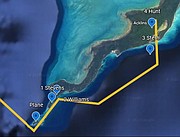
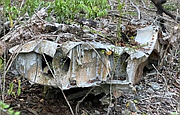
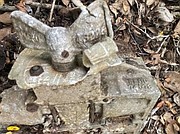
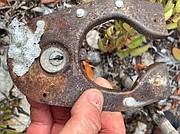
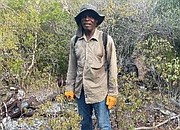
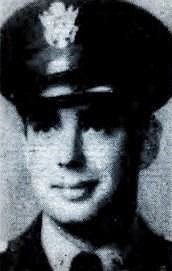
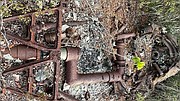





Comments
ThisIsOurs 9 months, 2 weeks ago
What a story! I like that they report finding "natives". Those Bahamians were just going about their daily subsistence lives and 4 men fall out the sky. These are some interesting sleepy islands that somehow always find themselves thrown into global tug of wars. #hobbits
Sign in to comment
Or login with:
OpenID